Spinal cord compression scale
1. Introduction
Patients with symptomatic high-grade epidural spinal cord compression from metastases originating from solid tumors should, especially in case of neurological deficit, in general be considered as surgical candidates for spinal cord decompression.
Exceptions to the above could be for metastases highly sensitive to chemotherapy (for example, hematological malignancies) or radiotherapy.
Determination of the degree of spinal cord compression is facilitated by the epidural spinal cord compression (ESCC) score.
ESCC score ranges from 0-3. Patients with low grade ESCC scores (0 and 1) have bone only disease or mild epidural tumor extension without spinal cord compression. Patients with high grade ESCC scores (2 and 3) have spinal cord displacement and/or compression.
Neurologic deficits attributable to spinal cord compression can occur in patients with high grade ESCC. These include sensory or motor deficits, bowel bladder dysfunction, and/or loss of ambulation.
Patients with loss of ambulation due to spinal cord compression, require urgent decompression. In rare cases of tumors highly sensitive to these modalities chemotherapy/radiotherapy may suffice.
Expeditious diagnosis and prompt surgery are recommended to improve the probability of neurological recovery.
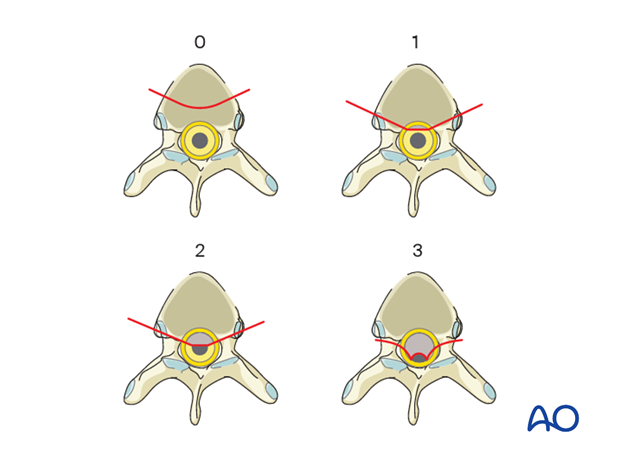
MRI should be used to determine ESCC score with focus on axial T1 weighted images with gadolinium and/or T2 weighted images.
2. Grade 0
There is no extension of the tumor into the spinal canal.
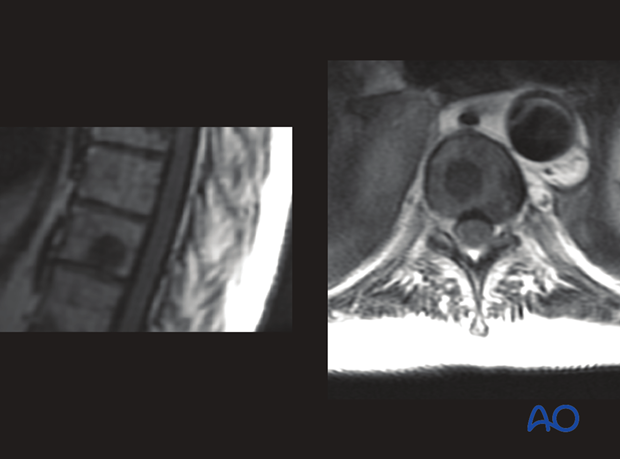
3. Grade 1
This MRI shows epidural tumor extension with spinal cord abutment without deformation. (Grade 1)
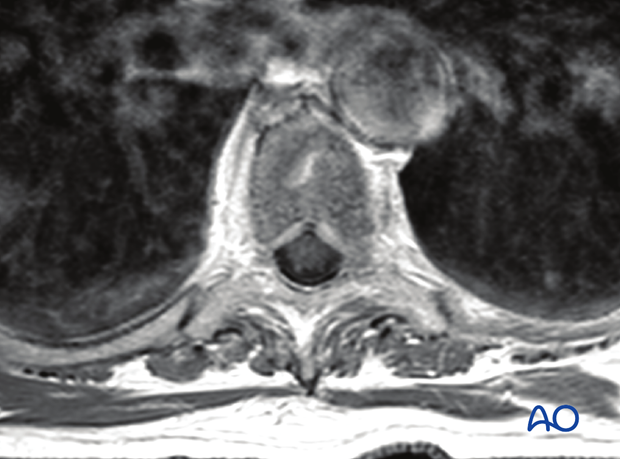
4. Grade 2
This MRI shows spinal cord displacement, with preservation of surrounding CSF
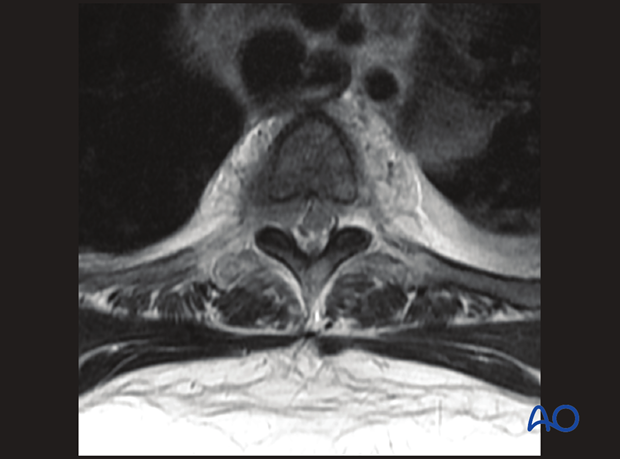
5. Grade 3
This MRI shows spinal cord compression and deformation. There is no surrounding CSF.
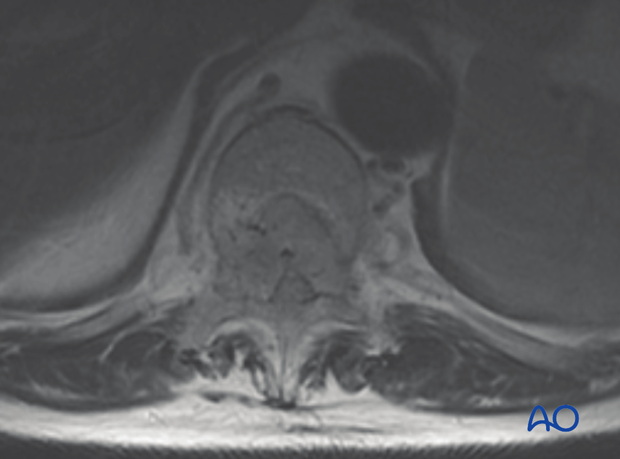
This MRI shows epidural extension with high grade spinal cord compression with spinal cord deformation, intramedullary edema, and loss of surrounding CSF.













